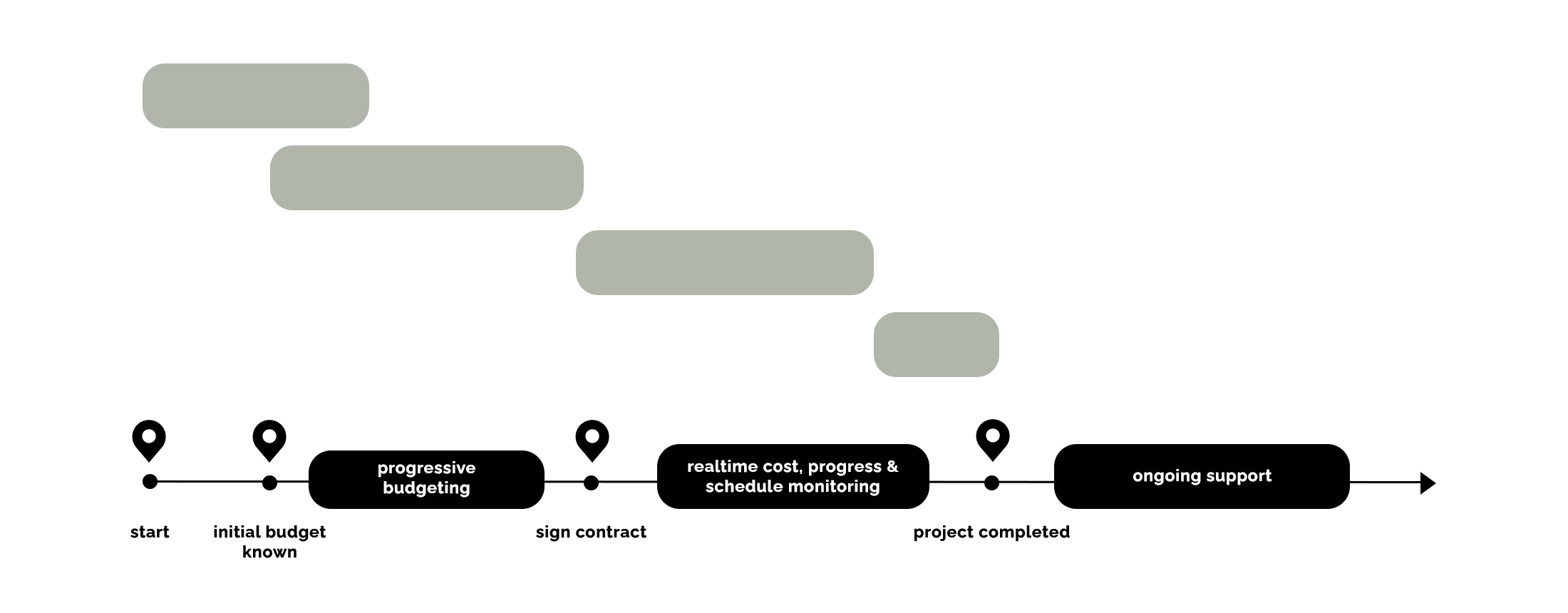the right fit for
your project.
Our Interior and Architectural Design service transforms your vision into a practical, stylish workspace tailored to your team’s needs. We take a holistic approach—combining creativity, functionality, and brand alignment—to deliver smart, innovative layouts and visually engaging workplace interiors. From concept development and space planning to finishes and detailing, we design with purpose, setting the foundation for a seamless fit-out experience.
the workspace 360 way.
Redefining traditional construction processes, the Workspace 360 way leverages an integrated design and build approach that cuts project timelines by over 30% and ensures budget alignment throughout the process.
Our secret? We consolidate all essential functions-from initial concept to final build-under one roof. Taking our cue from the Early Contractor Involvement (ECI) model, this streamlined approach enhances project management control, accelerates progress by minimising communication layers, and enables strategic value engineering to deliver best-in-class results. The outcome is maximum budget efficiency without sacrificing quality, ensuring faster and more economical solutions.
Project completed 35% faster
Single point of contact throughout the entire journey
Budget and scope aligned upfront
the workspace 360 way.
our methodology:
transparent and integrated approach

All projects begin by conducting a thorough
consultation with key stakeholders so we can
understand the vision, values and specific needs
as we begin the initial planning stage.
Based on insights gathered, Workspace360 will propose
concept options, incorporating all key elements and
requirements, and walk you through how they align to the
project’s goals. We manage all necessary documentation,
ensuring your project meets regulation and building codes.
involvement
We bring in our design and construction teams from the
outset, to help gain valuable insights into build ability,
cost, efficiencies and project timing - setting your project
up for success before construction begins.
With the planning and design phases complete, we move
seamlessly into construction. Our experienced project
managers and site teams ensure works are delivered to
the highest quality, on time and on budget - maintaining
open communication throughout the build.
& early orders
To mitigate delays and secure critical items, we engage key
suppliers early in the process. This includes placing early
orders for long-lead items and coordinating procurement to
ensure timely delivery aligned with the construction schedule.
We coordinate the selection, procurement, and installation
of all FF&E, aligning with the overall design intent and
functionality requirements. Our team ensures a smooth
delivery and setup, resulting in a cohesive and fully
operational workspace from day one.
